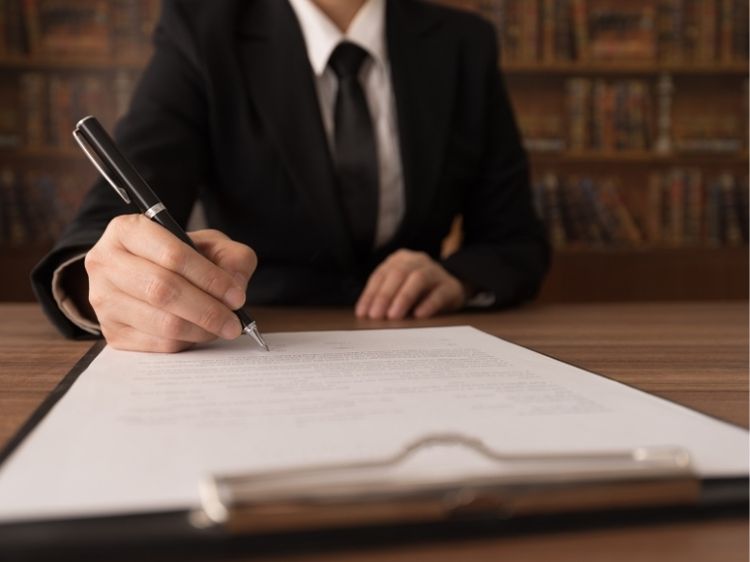Product Liability Is Based on What Law?
Product liability is one of those legal terms that often gets tossed around, but what does it really mean? If you’ve ever wondered, “Product liability is based on what law?” you’re not alone. This area of law governs the responsibility of manufacturers, distributors, suppliers, and retailers to ensure that the products they offer are safe for consumers. When something goes wrong, and a product causes harm, product liability laws kick in to hold the right parties accountable. But which laws are these? Let’s dive deep into the legal framework that forms the backbone of product liability.
Understanding Product Liability: The Legal Foundation
Product liability laws aren’t a one-size-fits-all concept. Instead, they’re grounded in several legal principles that vary depending on the jurisdiction. However, some common threads tie these laws together across different regions. The three primary legal bases for product liability are negligence, strict liability, and breach of warranty.
1. Negligence
Negligence forms the bedrock of many personal injury cases, and product liability is no exception. Under this legal theory, a plaintiff must prove that the defendant failed to exercise reasonable care in designing, manufacturing, or selling a product. This lack of care must have directly caused the injury or damage.
For instance, let’s say a company manufactures a toaster that catches fire because of a wiring defect. If it’s proven that the company neglected proper testing procedures, they could be held liable under negligence. The key here is the concept of “reasonable care”—a standard that can vary widely depending on the circumstances.
2. Strict Liability
Strict liability, as the name suggests, imposes liability on a party without the need to prove negligence or fault. This legal principle is particularly consumer-friendly, as it only requires the injured party to show that the product was defective and that this defect caused the injury.
In the case of our faulty toaster, strict liability would hold the manufacturer responsible simply because the product was defective and dangerous, regardless of whether they exercised care during its design or production.
3. Breach of Warranty
When a product comes with a warranty, either express or implied, the seller or manufacturer is legally bound to fulfill the terms of that warranty. If they fail to do so, and the product causes harm as a result, the injured party can sue for breach of warranty.
Warranties can be express, where the seller explicitly guarantees a product’s safety or functionality, or implied, where the law assumes a basic standard of quality. For example, an implied warranty of merchantability ensures that a product is safe for its intended use. If our defective toaster fails to toast bread safely, it could be a breach of this implied warranty.
Federal vs. State Laws: A Complex Web
The laws governing product liability are a mix of federal and state regulations. In the United States, for example, there isn’t a single federal law that exclusively covers product liability. Instead, various federal agencies like the Consumer Product Safety Commission (CPSC) set safety standards that products must meet.
At the state level, product liability laws can vary significantly. Some states may favor stricter liability rules, while others lean towards a negligence-based approach. This patchwork of laws can make it challenging for consumers and businesses alike to navigate product liability claims.
Key Federal Acts Influencing Product Liability
While state laws are crucial, several federal acts play a significant role in shaping product liability across the nation.
1. The Consumer Product Safety Act (CPSA)
Enacted in 1972, the CPSA established the CPSC and gave it the authority to develop safety standards and pursue recalls for products that pose a significant risk to consumers. The CPSA doesn’t directly address product liability lawsuits, but it does provide a framework for safety that can influence such cases.
2. The Food, Drug, and Cosmetic Act (FDCA)
The FDCA gives the Food and Drug Administration (FDA) the power to oversee the safety of food, drugs, cosmetics, and medical devices. Violations of the FDCA can lead to product liability claims, particularly in cases involving pharmaceuticals or medical devices.
3. The Magnuson-Moss Warranty Act
This federal law governs warranties on consumer products. It ensures that warranties are clearly communicated to consumers and provides legal recourse if a warranty is breached. The Magnuson-Moss Warranty Act can be a crucial tool in product liability cases involving breach of warranty claims.
Types of Product Defects
Product liability claims typically arise from three types of defects: design defects, manufacturing defects, and marketing defects. Understanding these categories is essential to grasp how liability is determined.
1. Design Defects
A design defect exists when a product is inherently dangerous due to its design, even before it’s manufactured. For example, if a toaster is designed without proper insulation, making it prone to electrical fires, this flaw would be considered a design defect.
2. Manufacturing Defects
Manufacturing defects occur during the production process and usually involve a deviation from the product’s intended design. If a batch of toasters is produced with faulty wiring due to an error on the assembly line, this would constitute a manufacturing defect.
3. Marketing Defects (Failure to Warn)
Also known as “failure to warn” defects, these involve inadequate instructions or warnings about a product’s proper use. If a toaster is sold without a warning label about the potential risk of overheating, and a consumer is injured as a result, this could be a marketing defect.
Product Liability in Different Jurisdictions
While the principles of product liability are similar across many countries, the specific laws and procedures can vary. Let’s take a quick look at how product liability is handled in a few key jurisdictions.
1. The United States
As mentioned earlier, U.S. product liability laws are a mix of federal and state regulations. The legal landscape is complex, with each state having its own rules and precedents. However, the general principles of negligence, strict liability, and breach of warranty are widely recognized.
2. The European Union
In the EU, product liability is governed by the Product Liability Directive, which imposes strict liability on manufacturers for defective products. This directive applies across all member states, providing a harmonized approach to product liability. Consumers need only prove that the product was defective and caused harm, without needing to show negligence.
3. The United Kingdom
The UK follows a similar approach to the EU, with the Consumer Protection Act 1987 being the key legislation governing product liability. This act imposes strict liability on producers for defective products, making it easier for consumers to claim compensation for injuries.
FAQs About Product Liability Laws
Q: What must a plaintiff prove in a product liability case?
A: The specific requirements depend on the legal theory being used. In a negligence case, the plaintiff must prove that the defendant failed to exercise reasonable care. In strict liability cases, the plaintiff must show that the product was defective and caused harm.
Q: Can a retailer be held liable for selling a defective product?
A: Yes, retailers can be held liable under certain circumstances, especially if they were aware of the defect or failed to provide adequate warnings. However, liability often falls more heavily on the manufacturer.
Q: How long do I have to file a product liability claim?
A: This varies by jurisdiction. In the U.S., each state has its own statute of limitations for product liability claims, typically ranging from two to four years.
Q: What defenses can a manufacturer use in a product liability case?
A: Common defenses include arguing that the product was misused by the consumer, that the defect didn’t cause the injury, or that the plaintiff assumed the risk by using the product.
Q: Are there any caps on damages in product liability cases?
A: In some jurisdictions, there may be caps on certain types of damages, such as punitive damages. However, this varies widely depending on the location and the specifics of the case.
Conclusion
Product liability law is a critical area of consumer protection, ensuring that manufacturers and sellers are held accountable for the safety of their products. Whether based on negligence, strict liability, or breach of warranty, these laws serve to protect consumers from harm and ensure that companies prioritize product safety. Understanding the legal foundations of product liability can empower consumers and businesses alike, helping to navigate the complex landscape of modern commerce.
Authoritative Links
- Consumer Product Safety Commission (CPSC): www.cpsc.gov
- Food and Drug Administration (FDA): www.fda.gov
- European Commission Product Liability Directive: www.ec.europa.eu
- UK Consumer Protection Act 1987: www.legislation.gov.uk





